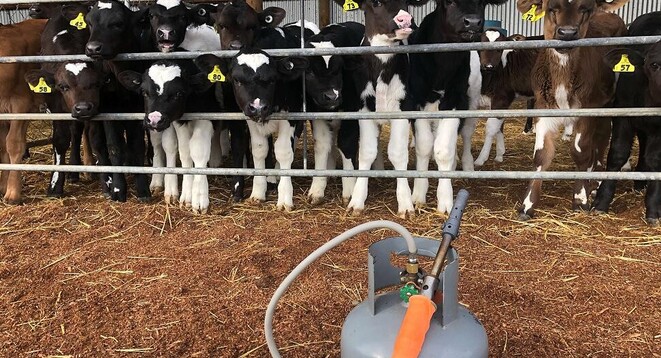What are your options for this calving season?
Calving season is a busy time of year for both farmers and vets. Alongside calving, comes calf disbudding too and luckily we have a large team of technicians to assist the vets during this busy time.
Our standard disbudding involves:
- Sedating the calf with Xylazine (general anesthetic),
- Using local nerve blocks (local anesthetic) and an antibiotic spray on the site after.
We also offer more pain relief options for recovery such as Tri-Solfen and Metacam. We can disbud calves between 2-6 weeks of age. As they get older the buds are bigger and harder to remove and may require being dehorned.
Our disbudding options are as follows;
- Standard: Xylazine, local and antibiotic spray.
- Silver: Xylazine, local, Tri-Solfen and antibiotic spray.
- Gold: Xylazine, local, Metacam and antibiotic spray.
- Diamond: Xylazine, local, Tri-Solfen, Metacam and antibiotic spray.
What else can be done during disbudding?
During disbudding, many farmers take advantage of the calves sleeping (and easy to handle!) and like to utilise this time for other routine work.
Here at Vetsouth, we can also blood test or ear-notch calves at the same time for things such as BVD, DNA and even the A2 gene.
In previous years, we have been able to do DNA and BVD testing with one ear punch but now the labs are requiring two separate notches: one for the BVD and one for DNA. Blood testing could be a more efficient way to get results for both. Have a discussion with your KeyVet to see what options suit you best.
- Tiarna Graham

